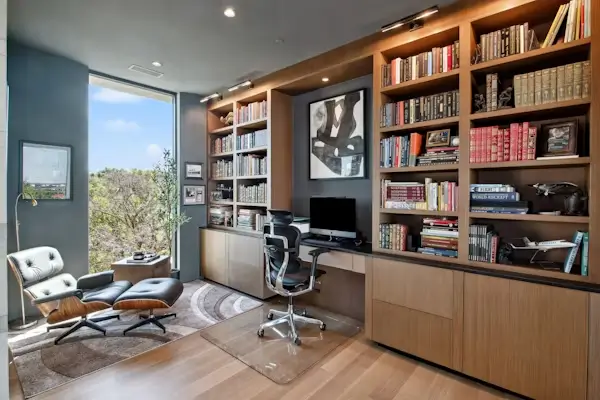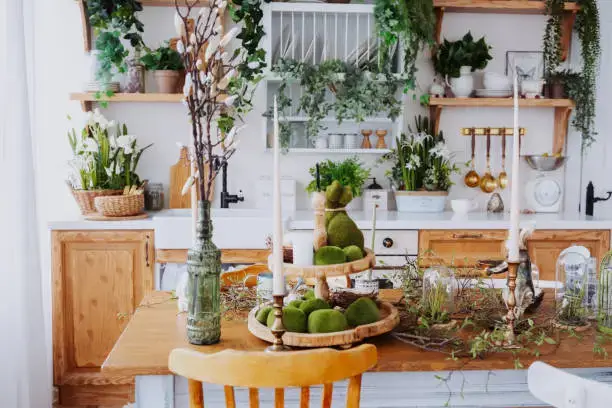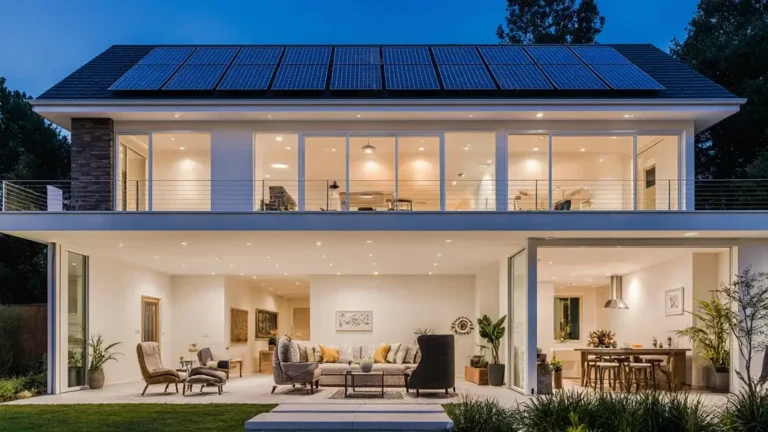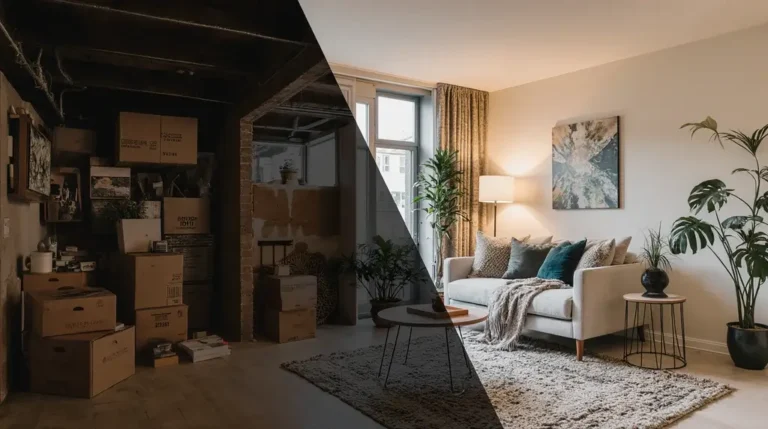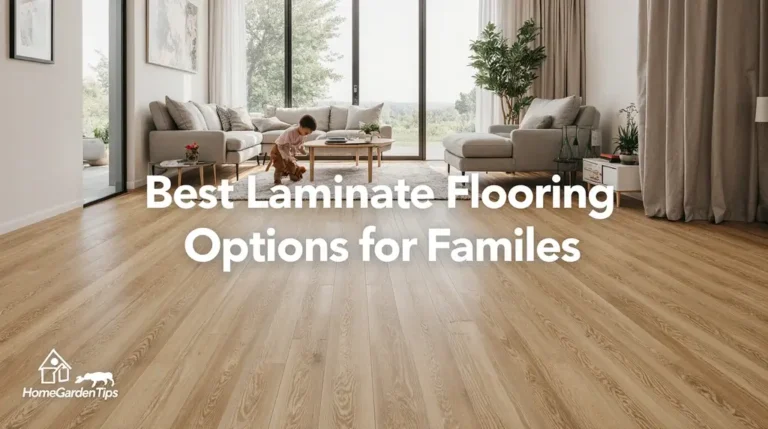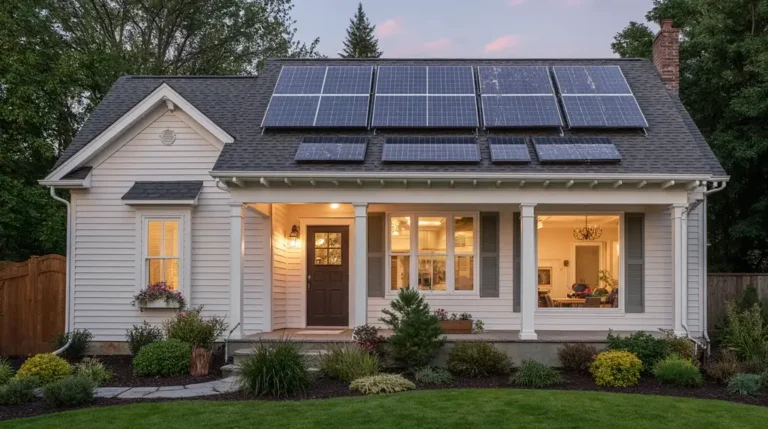Home Office Designs Hacks for Small Spaces Easy
Table of Contents
Home Office Designs
Look, let’s be real—the way we work has completely flipped on its head. Remember when working from home was just a “temporary thing”? Yeah, that ship has sailed. Remote work is here to stay, and honestly? Your home office deserves way more love than that wobbly TV tray you’ve been using as a desk. Upgrade your indoor space effortlessly—check out our featured product that perfectly complements the tips in this Home Improvement project & Indoor Living guide.
Whether you’re trying to squeeze a workspace into your spare bedroom or claiming a corner of your living room (we’ve all been there), it’s time to get serious about creating a setup that actually works for you.
The New Reality of Work
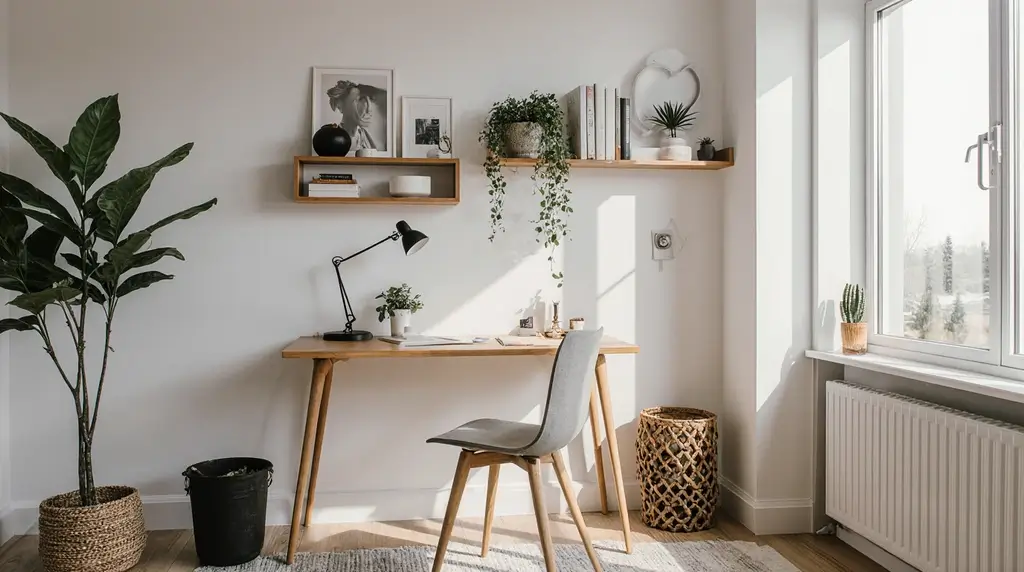
Here’s the thing: your home office isn’t just a desk anymore. It’s your command center for getting stuff done, your creative hub, and honestly, a pretty big reflection of your personal style. This is where you’re taking Zoom calls in your pajama pants, crushing deadlines, and hopefully coming up with some brilliant ideas.
For most of us working remotely, our workspace has evolved from “laptop on the kitchen table” (guilty!) to something that actually rivals those fancy corporate offices. And you know what? It should.
The goal here isn’t just having somewhere to plop your laptop. A modern remote work setup needs real thought, smart design choices, and—let’s be honest—a commitment to creating a space that doesn’t make you want to crawl back into bed by 2 PM. Small home office ideas have gotten seriously sophisticated because people finally realized this whole work-from-home thing isn’t going anywhere.
Why Optimization Matters
A well-designed space makes a huge difference in how focused you are, how much you actually get done, and whether you end the day feeling like a productive human or a pretzel. Science backs this up—your environment directly messes with (or helps!) your brainpower, stress levels, and how much you actually like your job.
Bad lighting? Hello, eye strain. Terrible chair? Welcome to back pain city. Messy desk? Your brain’s probably screaming too.
This guide isn’t going to give you the same boring advice you’ve heard a million times. We’re covering everything from the ergonomic stuff you actually need to the aesthetic choices that’ll make your space Instagram-worthy (because let’s face it, that matters too). Whether you’ve got a whole room to work with or you’re getting creative with space-saving office design in a tiny apartment, these strategies will help you build a workspace that doesn’t suck.
Foundation: Non-Negotiable Core Principles
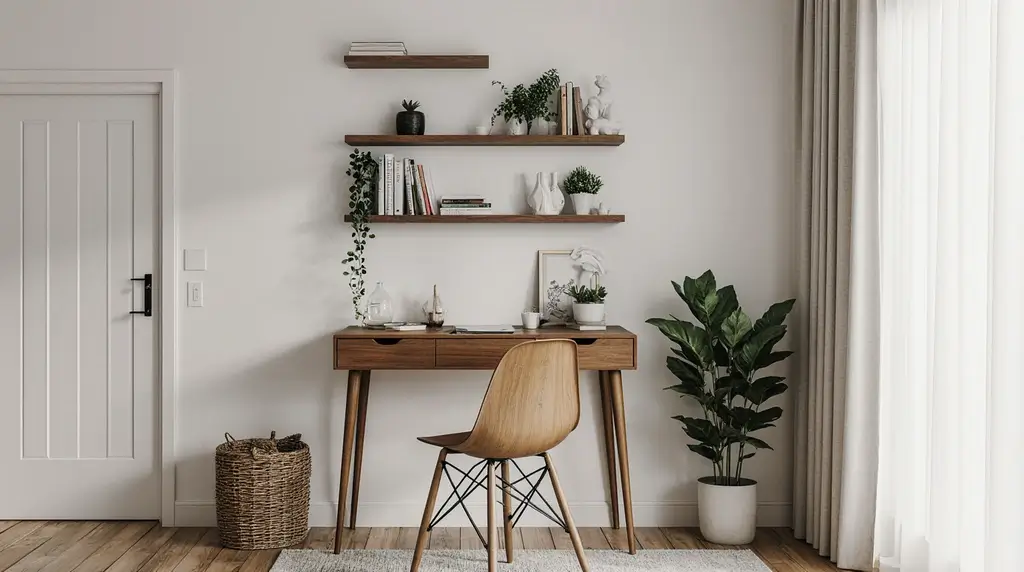
Before we dive into the fun design stuff, let’s talk about the basics. Every good home office needs these fundamentals, no matter what style you’re going for.
Ergonomics First: Prioritizing Health
Okay, ergonomics sounds super technical and boring, but stick with me. It’s basically just the science of making sure your furniture doesn’t turn you into the Hunchback of Notre Dame. Trust me, this stuff matters.
Start with the big three: a desk you can adjust (sitting all day is basically the new smoking), a chair that actually supports your back, and monitor arms that put your screen at eye level so you’re not constantly looking down like you’re searching for spare change.
I know, I know—quality ergonomic stuff costs money. But think of it this way: it’s an investment in not feeling like garbage after an 8-hour workday. Your future self will thank you.
Intelligent Layout & Location
Location, location, location! Pick somewhere quiet where your family, roommates, or that neighbor who loves mowing their lawn at 7 AM won’t constantly bug you.
Try to snag a spot near a window—natural light is a total game-changer. It’ll help your eyes, boost your mood, and make you feel less like a cave-dwelling hermit. Just don’t put your monitor directly facing the window unless you enjoy playing “guess what’s on my screen through the glare.”
If you’ve got the space, create different zones. Have a “deep work” area for when you need to focus without interruptions, and maybe an “analog zone” with comfy seating for reading or brainstorming away from screens. This space-saving office design trick helps your brain know what mode you’re in.
Personalized Organization & Clutter Control
Real talk: clutter is productivity poison. When your desk looks like a tornado hit it, your brain’s working overtime just processing the visual chaos.
Get yourself some storage solutions: cabinets for stuff you rarely use, drawers for daily essentials, shelves that go up (not out) to save floor space, and wall organizers for the things you grab all the time.
Keep your surfaces clear—seriously, this is non-negotiable if you’re going for any kind of minimalist vibe. Everything needs a home, and you’ve gotta do a quick tidy at the end of each day. Future you will be grateful.
Layered Lighting as a Tool
Lighting matters way more than you think. You want a mix: overhead lights for general brightness, a desk lamp for when you’re really focusing, and as much natural light as you can get.
Skip the harsh, fluorescent nightmare lighting that makes everything look like a hospital. Instead, layer different light sources at different brightness levels. Adjustable lights are your friend because natural light changes throughout the day, and you don’t want to be squinting at 4 PM.
The Balance Equation: Aesthetics vs. Ergonomics
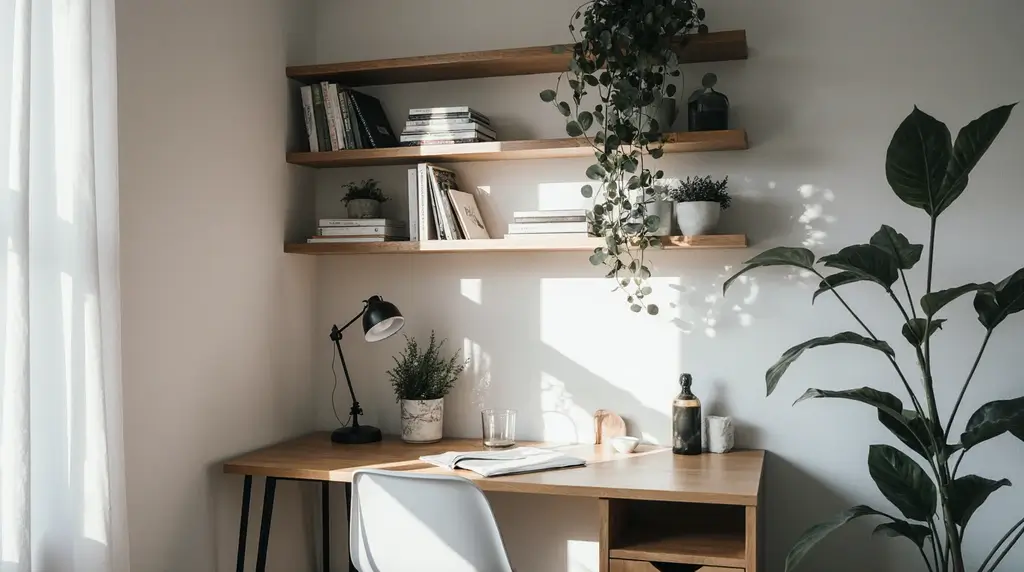
Here’s where things get tricky. Making your home office look good while also being comfortable is like trying to find a unicorn. Most ergonomic stuff looks super clinical and boring, while the pretty furniture often feels like sitting on a medieval torture device.
The Conflict
You want your remote work setup to look good for video calls and inspire you to actually work, but it also needs to keep your body happy during those marathon work sessions. That gorgeous desk you saw on Pinterest? Probably can’t be adjusted. That perfect ergonomic chair? Might look like it belongs in a doctor’s office.
It’s a real problem.
Hitting the Perfect Balance
The good news? More companies are finally getting it and making stuff that looks good AND feels good. Modern chairs that support your back without looking like medical equipment? They exist! Desks with hidden height adjustments that look sleek? Yep, those too!
Smart tech integration helps a lot here. Monitor arms and good cable management keep things looking clean while being super functional. Go wireless where you can to cut down on the cable jungle, and use trays or channels to hide the wires you can’t eliminate.
Stick with a cohesive color scheme—neutrals, wood tones, subtle metal accents—and even mismatched pieces will look intentional instead of like you just grabbed whatever was on sale.
The 10 Definitive Home Office Design Styles

Alright, now for the fun part! Here are ten different ways to design your home office. Each one’s got its own vibe and works for different people and spaces.
1. Minimalist Scandinavian Home Office
The Vibe: Think IKEA catalog meets zen monastery. It’s all about keeping things simple, clean, and super functional.
What You’ll Need:
- Colors: whites, grays, soft beiges (basically, very chill)
- Light wood everywhere—birch, ash, that pale oak that’s always trending
- Furniture with clean lines and zero unnecessary stuff
- Surfaces so clean you could eat off them (but please don’t)
- Natural materials that feel good to touch
This is perfect for small home office ideas because it doesn’t overwhelm tiny spaces. Less stuff = more room to breathe.
2. Biophilic Nature-Inspired Office
The Vibe: Basically bringing the outdoors in. If you’re the type who feels more alive around plants and natural stuff, this is your jam.
What You’ll Need:
- Plants! Lots of plants! (Even if you’ve killed every succulent you’ve ever owned, try again)
- Maximum windows and natural light
- Wood, stone, woven materials—anything that feels like nature
- Earth tones: greens, browns, natural colors
- Maybe even a little water fountain if you’re feeling fancy
Science says being around nature stuff seriously helps with focus and stress. Plus, talking to your plants during work breaks is totally normal. We all do it.
3. Ergonomic Wellness-Focused Office
The Vibe: This is for people who are serious about not destroying their bodies while working. Health first, everything else second.
What You’ll Need:
- A desk that goes up and down (so you can switch between sitting and standing)
- A chair that actually fits YOUR body with all the adjustable bits
- Monitor arms at eye level (no more neck pain!)
- An anti-fatigue mat for when you’re standing
- Fancy ergonomic accessories like split keyboards (they look weird but your wrists will love you)
This is essential if you’re already dealing with aches and pains or want to prevent them. Your body will thank you.
4. Tech-Integrated Smart Office
The Vibe: Living in the future! Everything’s automated, connected, and working smarter, not harder.
What You’ll Need:
- Rock-solid Wi-Fi (non-negotiable)
- Smart lights that adjust automatically throughout the day
- Smart thermostat so you’re never too hot or cold
- Wireless charging pads everywhere
- Voice assistant to boss around
- Multiple monitors because one screen is for amateurs
Perfect for tech nerds and anyone who wants their workspace to feel like it’s from 2025, not 2005.
5. Multi-Functional Convertible Office
The Vibe: Maximum creativity for minimum space. This is the “my office is also my guest room, dining room, and maybe my workout space” setup.
What You’ll Need:
- Murphy bed that folds into the wall (mind = blown)
- Wall-mounted folding desk that disappears when you’re done
- Storage that goes vertical (use those walls!)
- Room dividers to separate work from life
- Furniture with wheels that you can move around
This is THE ultimate space-saving office design for small apartments or anywhere you’re short on room. It’s like Transformers, but for furniture.
6. Industrial Loft-Style Office
The Vibe: Raw, edgy, urban cool. Like you’re working in a converted warehouse (even if you’re actually in a suburb).
What You’ll Need:
- Exposed brick if you’ve got it
- Concrete surfaces or that concrete-look stuff
- Black steel and iron everywhere
- Vintage or reclaimed wood pieces
- Edison bulbs and exposed fixtures
- Lots of black, gray, and brown
This style is bold and looks amazing in loft apartments or if you’ve got industrial features to work with.
7. Vintage Mid-Century Modern Office
The Vibe: That cool 1950s-60s aesthetic that somehow never goes out of style. It’s retro but in a sophisticated, not-tacky way.
What You’ll Need:
- Furniture with those iconic tapered legs
- Warm wood tones—teak and walnut are your friends
- Geometric patterns in rugs and art
- Pops of color like mustard yellow, burnt orange, or teal
- Clean lines mixed with organic curves
This gives you character without looking dated. It’s the Goldilocks of home office designs—just right.
8. Executive Traditional Office
The Vibe: Serious, established, “I mean business” energy. Like you’re running a law firm from home.
What You’ll Need:
- Big, substantial desk in mahogany or cherry wood
- Tall bookcases filled with impressive-looking books
- Rich, deep colors: burgundy, navy, forest green
- Brass hardware and leather everything
- Persian rug for maximum sophistication
- Built-in cabinets if you’re really going for it
This is for when you want your remote work setup to scream “success” and “don’t mess with me.”
9. Cozy Reading Nook Office
The Vibe: Work meets comfort. It’s hygge but make it professional. (Okay, semi-professional.)
What You’ll Need:
- A comfy armchair or small sofa (not just the desk chair)
- Warm lighting everywhere—table lamps, floor lamps, maybe string lights
- Soft textures: plush rugs, throw blankets, all the cushions
- Warm colors and earth tones
- Personal stuff that makes you happy—photos, art, meaningful objects
This works great for creative types or anyone whose job involves a lot of reading and thinking.
10. Creative Artist’s Studio Office
The Vibe: Organized chaos where creativity happens. Functional, flexible, and totally unapologetic about being a work zone.
What You’ll Need:
- Different zones for different tasks (computer work vs. messy art stuff)
- Rolling carts and pegboards for easy access to supplies
- Furniture that can handle some abuse
- Multiple work surfaces at different heights
- Inspiration boards and visual displays everywhere
This is for artists, designers, makers, and anyone who needs a real studio vibe.
Style Comparison Table
| Office Style | How Hard Is It? | Best For | Why It’s Awesome |
|---|---|---|---|
| Minimalist Scandinavian | Medium – you gotta stay organized | Focused work, tiny spaces | Looks timeless, maximizes light |
| Biophilic Nature-Inspired | Medium – plants need love | Creative work, stress cases | Makes you feel better, less stressed |
| Ergonomic Wellness | Medium-High – special equipment needed | Health nuts, long work hours | Prevents injuries, more energy |
| Tech-Integrated Smart | High – lots of tech to set up | Tech lovers, efficiency freaks | Automation is the future |
| Multi-Functional Convertible | Medium – takes planning | Small apartments, shared spaces | Makes the most of limited room |
| Industrial Loft-Style | Low-Medium – works with what you have | Urban spaces, creative fields | Bold look, won’t break the bank |
| Vintage Mid-Century Modern | Medium – finding authentic pieces | Professional meetings, style lovers | Never goes out of style |
| Executive Traditional | High – quality costs money | Established pros, formal work | Looks impressive and authoritative |
| Cozy Reading Nook | Low – just focus on comfort | Casual work, thinkers | Super relaxing, good vibes |
| Creative Artist’s Studio | Medium – organized functionality | Artists, makers, designers | Supports creativity, super flexible |
Action Plan: Implementing Your Ideal Workspace
Okay, so you’ve got ideas. Now what? Let’s make this happen.
Synthesizing Your Vision
Here’s a secret: you don’t have to pick just one style and stick to it like it’s a life sentence. The best home offices mix and match. Maybe you want Mid-Century Modern furniture with smart office tech, or Scandinavian minimalism with a bunch of plants. Do you!
The best ideas are the ones you actually customize to fit YOUR life. Think about how you work, what your day looks like, what makes you happy, and what your space can realistically handle.
Step-by-Step Creation
1. Define Your Core Needs
Start by being honest about what you actually do every day. Are you on video calls constantly? Do you need multiple monitors? Do you still use a notebook and pen? (No judgment—analog is cool.) Make a list of what you absolutely need.
2. Select Your Style(s)
Pick a main style that speaks to you, then steal ideas from other styles to fill in the gaps. Like, maybe you’re mostly into Minimalist Scandinavian but you also need those ergonomic features from the Wellness-Focused style. Mix it up!
3. Measure and Plan
Get a tape measure and actually measure your space. I know it’s not the fun part, but trust me—nothing’s worse than buying furniture that doesn’t fit. Sketch out where everything will go, making sure you can still, you know, walk around. Think about desk height, monitor placement, and whether you can actually reach your stuff.
4. Build in Phases
Don’t try to do everything at once. You’ll go broke and probably overwhelm yourself. Start with the essentials—desk, chair, monitor setup. Then add storage. Then do the pretty stuff. This way you spread out the cost and can actually live with your choices before committing to more.
Exploring Tools & Resources
There are some cool online tools that can help. Design style quizzes will spit out mood boards based on what you like—super helpful for visualizing everything together.
Budget calculators keep you from accidentally spending your rent money on a desk lamp. Be realistic about costs upfront.
Check out companies that specialize in ergonomic stuff. Mount-It! makes good sit-stand desks and monitor arms. Read reviews, check specs, and don’t just buy the first thing you see.
If you can, test furniture in person. Everyone’s body is different—what’s comfy for your friend might be torture for you.
Frequently Asked Questions
Q: What are the key elements of a productive home office?
A: You need somewhere quiet, furniture that won’t wreck your body, good natural light, and organization that actually works. Plus decent tech, good lighting options, and stuff that makes you happy to be there. Productivity is part function, part psychology.
Q: How should I position my desk?
A: Get it near a window for that sweet natural light—it helps your eyes and your mood. But don’t put your monitor facing the window directly or you’ll be squinting at glare all day. Put it perpendicular instead. If you’re stuck without windows, invest in good lights that mimic daylight.
Q: How do I minimize distractions in a shared space?
A: Noise-cancelling headphones are a lifesaver. Set up some kind of divider—even a bookshelf works—to create visual separation. Keep your desk clear (less visual noise). And maybe most importantly, set some ground rules with whoever you’re sharing space with about when you need to focus.
Q: What’s the best way to start if I have a limited budget?
A: Ergonomics first, always. Even a basic decent chair and getting your monitor at the right height makes a huge difference. Start with must-have furniture and add the pretty stuff later. Check out used furniture—you can find great deals. DIY solutions like wall shelves and cable management are cheaper than you think and still look professional.
Q: How can I make a small space feel larger?
A: Light colors make spaces feel bigger. Max out natural light. Mirrors are your friend (they create the illusion of more space). Multi-functional furniture is clutch. Go vertical with storage instead of eating up floor space. And seriously, less clutter makes everything feel bigger. Space-saving office design is all about quality over quantity.
Q: Should I separate my work and personal life physically?
A: Ideally, yeah. Having a dedicated space helps your brain switch into work mode and makes it easier to actually “leave” work at the end of the day. But if you don’t have a separate room, create separation however you can—furniture placement, dividers, or even just a ritual like closing your laptop and putting it away to signal you’re done for the day.
Conclusion
Your ideal home office is basically a personal sanctuary where you can get stuff done, feel comfortable, and actually want to be. It’s where your professional life meets your personal style, where science-backed ergonomics support your body, and where everything serves a purpose (and looks good doing it).
The best spaces nail both the practical stuff and the pretty stuff—they look great on video calls while also keeping your back from hating you after eight hours. They feel like YOU while still being functional for actual work. They inspire you without distracting you.
Whether you’re working with a tiny corner in your apartment using clever small home office ideas or designing a whole dedicated room, the principles stay the same: take care of your body first, get as much natural light as possible, stay organized, and pick a style that actually resonates with you (not just what’s trending on Instagram).
Your remote work setup deserves some love and investment. The space you create today affects how productive you are, how healthy you stay, and whether you actually enjoy working from home. By using the stuff in this guide, you’re not just arranging furniture—you’re building an environment where your best work happens.
Start small. Move your desk near a window, invest in a better chair, or just clear off your surfaces. Each little improvement builds momentum toward that space-saving office design you’ve been dreaming about. Your perfect workspace isn’t some impossible fantasy—it’s just a series of smart choices, and you can start making them right now.
Now go make your workspace awesome! You’ve got this.
Home Office Designs Hacks for Small Spaces Easy
Look, let’s be real—the way we work has completely flipped on its head. Remember when working from home was just a “temporary thing”? Yeah, that ship has sailed. Remote work is here to stay, and honestly? Your home office deserves way more love than that wobbly TV tray you’ve been using as a desk. Upgrade your indoor space effortlessly—check out our featured product that perfectly complements the tips in this Home Improvement project & Indoor Living guide.

